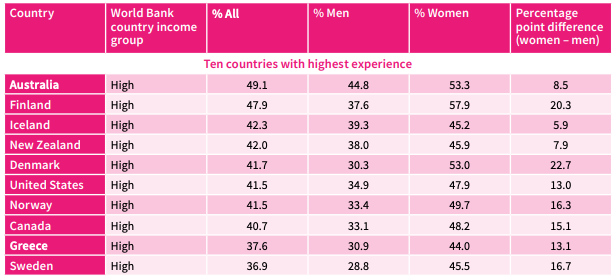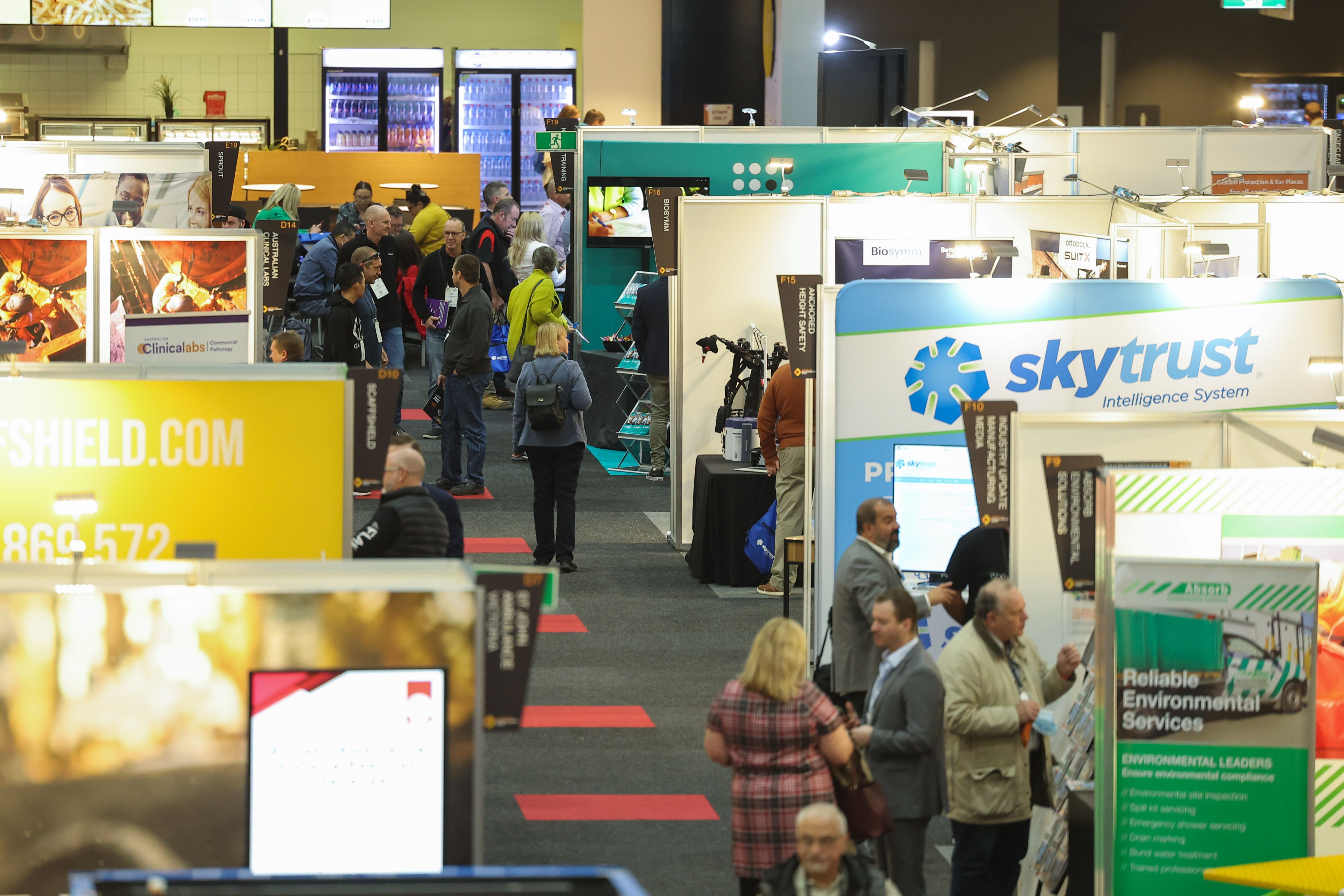Addressing Incivility, Bullying, and Harassment: A Critical Workplace Health and Safety Focus for 2024
)
Offensive behaviours, such as disrespectful interactions, bullying and harassment pose a significant risk to individual mental health and expose organisations to liability.
Read on to understand incivility, bullying and harassment in the workplace, learn how these offensive behaviours affect your organisation; how to identify these hazards in your workplace and how to address them.
Incivility is described as social encounters that convey disrespect with low intensity and ambiguous intent, which can occur in face-to-face or remote communications. Incivility is a workgroup phenomenon, not an individual problem, and it often spirals into more significant issues if not addressed.
Examples of incivility include dismissive attitudes, ignoring contributions during meetings, or responding to queries with an unreasonably delayed or brusque manner. Incivility often breeds more incivility. Anderson & Pearson (1999)* identified how it spreads in a workplace and created the diagram below showing the incivility spiral. *Andersson, L. M., & Pearson, C. M. (1999). Tit for Tat? The Spiraling Effect of Incivility in the Workplace. The Academy of Management Review, 24(3), 452–471.

Bullying is characterised as repeated and unreasonable behaviour directed towards a worker or a group of workers that can lead to physical or psychological harm*.
Unreasonable actions are those that a reasonable person in the same circumstances would see as unreasonable, such as abusive language, belittling comments, social exclusion, or withholding information needed to perform one's job.
*Safe Work Australia (2016). Guide for Preventing and Responding to Workplace Bullying
WorkSafe NZ (2017). Preventing and Responding to Bullying at Work
Harassment is behaviour that is unwelcome or unsolicited, offensive, humiliating, or intimidating and relates to someone's gender, race, age, sexuality, disability, marital or domestic status, pregnancy, or breastfeeding status. This form of conduct can create a hostile work environment and is prohibited under various laws.
Sexual Harassment is any unwelcome sexual advance, request for sexual favours, or other conduct of a sexual nature which makes a person feel offended, humiliated, or intimidated, where a reasonable person would anticipate that reaction in the circumstances.
Sexual harassment can take many forms, including but not limited to, suggestive comments, intrusive questions about one's private life, or unwarranted physical contact.

SafeWork NSW (2023). Respect at Work Strategy – preventing sexual harassment
How do Australia and New Zealand track?
The World Risk Poll 2021: Safe at Work prepared by Lloyd's Register Foundation and Gallup paints a worrying picture. As shown below, Australia tops the list of countries with the highest incidence of workplace violence and harassment.

The report authors explain why these findings might seem surprising, given that these countries are all high-income and many of them do well on global reports such as the World Happiness Report.
In terms of Australia and New Zealand specifically, these results are not without precedent. The World Risk Report (2019) found 39% of women in Australia having experienced violence and harassment at work*. Similarly, a 2018 study found that 54.8% of employed Australians had experienced harassment at work.^
Other reasons underpinning these findings are likely related to societal attitudes, strong laws, and increased awareness.
Society's Stance: In Australia and New Zealand, there's a widespread agreement that workplace violence and harassment are unacceptable. This shared belief encourages people to speak up if they're mistreated at work.
Legal Support: Both countries have set up laws that protect workers from violence and harassment. These laws make it clear that such behaviours won't be tolerated and offer support to those affected. Knowing these protections are in place is likely to give people more confidence to come forward with their experiences.
Awareness: Workers in Australia and New Zealand are generally informed about what counts as violence and harassment and what to do if they encounter it. Thanks to educational efforts, workplace policies, and public campaigns, employees know their rights and understand the importance of reporting any incidents.
Together, these elements form a supportive environment that encourages people to report incidents of violence and harassment. While this might make the problem seem more common in these countries, it might actually show their commitment to tackling the issue head-on. The goal is to make workplaces safer for everyone, and the higher report rates reflect these countries' proactive approaches rather than necessarily a higher rate of incidents.
*The Lloyd's Register Foundation (2019). World Risk Poll
^Australian Unions (ACTU). (2018). Sexual harassment in Australian workplaces: Survey results. ACTU, Melbourne
The Cost of Offensive Behaviours
The Cost of Incivility:
Research by Porath and Pearson (2013) has identified that among workers who have been on the receiving end of incivility:

Porath, C., & Pearson, C. (2013). The Price of Incivility. Harvard Business Review, 91(1/2), 114–121.
The Cost of Bullying
A study* in the Orlando Business Journal that surveyed 9,000 federal employees found that 57% reported they had been bullied over a two-year period. The study estimated that these bullies had collectively cost their organisations more than $180 million USD.
*Farrell, L.U. (2002) Workplace Bullying’s High Cost: 180 Million Dollars Lost in Time, Productivity. Orlando Business Journal.
The Cost of Sexual Harassment in Australia:
An investigation into sexual harassment in Australian workplaces conducted by the Australian Human Rights Commission (2022) found that those exposed to this psychosocial hazard have experienced:

SafeWork NSW (2023). Respect at Work Strategy – preventing sexual harassment
How to identify offensive behaviours
Here are some questions for you to reflect on:
- Have I noticed offensive behaviours in my organisation?
- Am I aware of complaints related to offensive behaviours in my organisation?
- Where might offensive behaviours take place?
- When might they take place?
- How could they take place?
- What form might they take?
- Who might be affected?
- How might offensive behaviours impact workers at higher risk?
Workers at higher risk include workers with:
- limited work experience (e.g. young workers, apprentices or trainees)
- barriers to understanding safety information (e.g. literacy or language)
- perceived barriers to raising safety issues (e.g. workers engaged in insecure or precarious work)
- certain attributes, such as sex, race, religious beliefs, pregnancy, gender identity, sexuality, age, or a combination of these attributes
- an injury or illness preventing them from performing their full or normal duties.
Insights from our Psychosocial Hazards Audits
Heart and Brain Works (HBW) Psychosocial Hazards Audits measure over 30 hazards and are customisable to meet your needs.
Our data analysis algorithm transforms results into risk values, so you don't get just a hazard list, but rather, you know exactly what your risks are and also what your protective factors are. Protective factors refer to job resources and if you are using a tool that does not measure these, the results you are getting are likely inaccurate. That is because protective factors mitigate the negative impact of psychosocial hazards.
This is what we found in our audits related to offensive behaviours:
- 53% have witnessed or experienced incivility at work in the past year: This statistic highlights the prevalence of incivility in the workplace, underscoring the need for organisations to address this issue proactively to foster a respectful and positive work environment.
- Bullying and harassment, including sexual harassment, are under-reported: The under-reporting of bullying, harassment, and sexual harassment suggests a need for workplaces to create a safer and more supportive environment for employees to come forward with their experiences.
- Line managers play a crucial role in the prevention and reduction of offensive behaviours: This insight emphasises the importance of equipping line managers with the necessary skills and training to effectively address and prevent offensive behaviours, thereby contributing to a healthier and more respectful workplace culture.
6 Principles for Preventing Offensive Behaviours
- Leadership commitment is key: Strong leadership commitment is essential in setting the tone for a respectful and inclusive workplace culture. It involves leaders leading by example and actively demonstrating their dedication to preventing offensive behaviours and promoting a safe and positive work environment.
- Consult all your staff in an unbiased manner: Engaging with all employees through unbiased consultation helps ensure that diverse perspectives are considered in developing strategies to prevent offensive behaviours. Effective staff consultation includes the following features: staff feel safe to bring up issues without fear of repercussions, staff anonymity is ensured, data analysis and gathering is unbiased. Often times this type of consultation requires the help of an external provider.
- Train your managers: Providing training for managers equips them with the necessary skills and knowledge to identify, address, and prevent offensive behaviours in the workplace. Effective training empowers managers to lead by example and support their teams in maintaining a respectful work environment.
- Offer a variety of channels for reporting: Having multiple channels for reporting offensive behaviours encourages employees to come forward with their concerns. It is important to offer both formal and informal reporting options, ensuring accessibility and confidentiality for all staff members. Consider adding an anonymous reporting channel to your existing systems if you don’t have one.
- Apply policies consistently: Consistent application of policies related to preventing offensive behaviours is crucial in maintaining fairness and trust within the workplace. It ensures that ALL employees, including high performers, are held to the same standards and that any incidents are dealt with appropriately.
- Create trauma-informed processes: Developing trauma-informed processes involves understanding and acknowledging the impact of trauma on individuals. By incorporating this approach, workplaces can provide support that is sensitive to the needs of those affected by offensive behaviours, promoting healing and recovery.
Case Study Oh HBW client
Organisation Profile
- Over 800 employees
- Wellbeing strategy sat with HR
- The Health and Safety team had separate goals.
Business problem:
- High staff turnover
- Ineffective team collaboration and effective client deliverables
- Lack of data regarding psychosocial hazards
HBW Psychosocial Hazards Audit results:
- Data revealed:
- 79% of staff witnessed or experienced incivility
- 34% experienced bullying and harassment
- Compounding factors: high job demands, high role conflict, low process clarity, history of siloes
Highlights of solutions implemented:
- HBW intervention on Civility, Respect and Collaboration
- HBW/client-led interventions related to work design, role clarity and process clarity
- Resourcing understaffed teams (50% less than what was estimated before the audit)
Results:
12-month follow-up audit revealed:
- 31% reduction in incivility rates.
- 23% reduction in bullying and harassment rates.
- 47% improvement in support from line manager and organisational justice.
For more details, please watch the live webinar recording.
---
About the author
Dr Georgi Toma, Director, Heart & Brain Works.
Dr Georgi Toma is the founder of Heart & Brain Works. Dr Toma is a data-driven consultant and workplace mental health researcher. Her areas of expertise are stress, burnout, mental wellbeing and psychosocial hazards in the workplace. Psychosocial hazards are aspects of work that might negatively impact employee mental health.
---
Chat to Heart & Brain Works at the Workplace Health & Safety Show in Melbourne on Wednesday 22 – Thursday 23 May. Or join their session on the Spotlight Stage!
Register now to access your FREE ticket.

